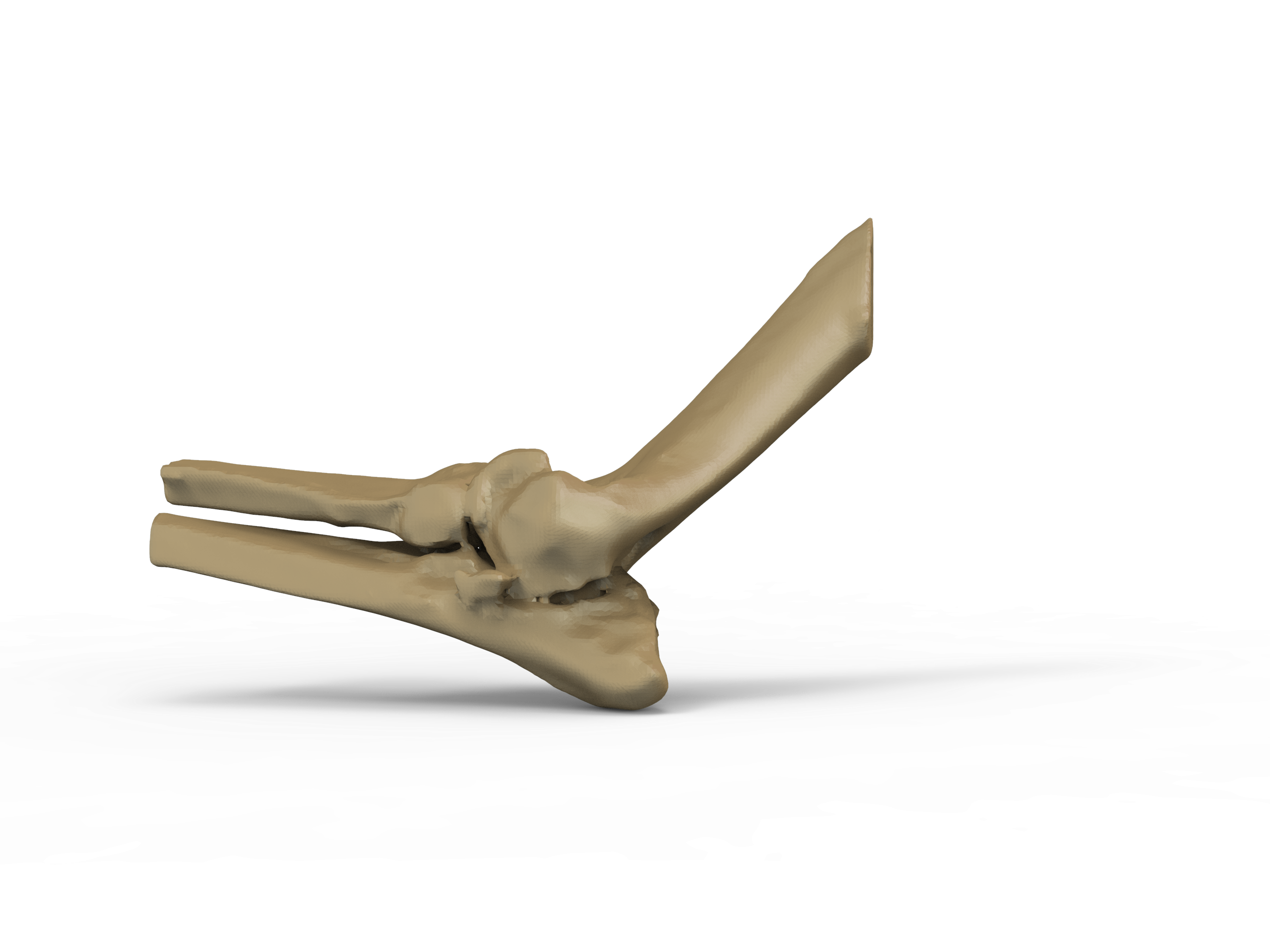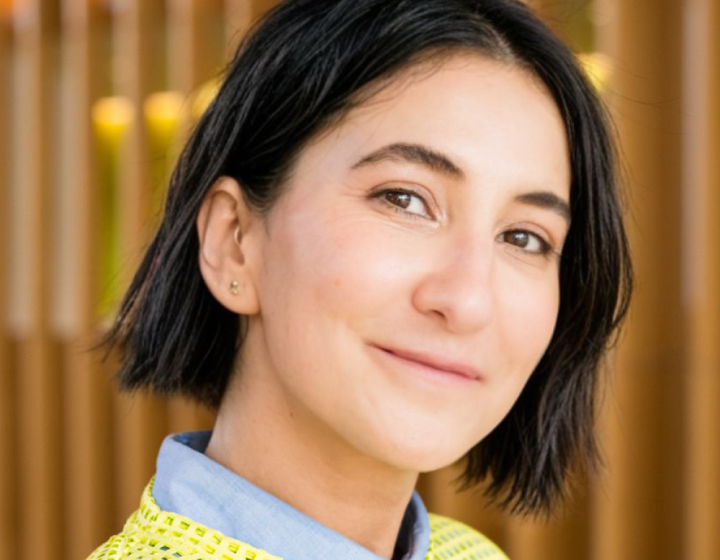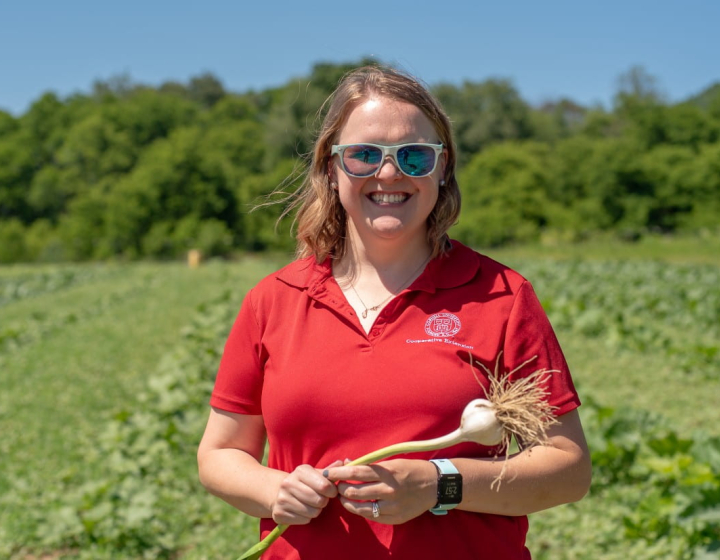Passion for 3D printing and veterinary medicine lead first-year student to Cornell
There are many gateways to the veterinary medical field. For Rochester Institute of Technology (RIT) graduate Sean Bellefeuille, it was 3D printing.
“As an undergraduate in biomedical engineering at RIT, I became really passionate about 3D printing,” he says.
He joined a club that specialized in the technology, working with organizations that helped get custom, 3D-printed prosthetics to children with amputations. “That’s where I learned the basics of design and printing,” he says. He continued an in-depth exploration of the technology, studying the market needs and gaps, and discovered that veterinary medicine held huge potential for 3D printing.

Currently, only a handful of companies produce anatomical models and prosthetics for animals, and their products are highly expensive, Bellefeuille explains.
The spark that ignited his business came from a Rochester-area emergency veterinary hospital, which reached out to RIT’s biomedical engineering department in hopes of expertise. They had a difficult orthopedic case — a patient with a rare femoral deformity that needed surgical intervention. To prepare for the procedure, the surgeon wanted a 3D printed model of the bone to examine.
“The department funneled it down to me and couple other students who worked with 3D printing,” says Bellefeuille. “Without knowing how, we said ‘sure we’ll do it’.”
Using a CT scan provided by the veterinarians, Bellefeuille and his colleagues printed a 3D model of the femur. The RIT students were invited to watch the surgery, during which the surgeon paused and asked to look at the femur for reference before making a certain cut. “That was a big moment,” says Bellefeuille. “It was proof that our 3D printed anatomical models delivered a real benefit to a veterinarian in a clinical setting. We figured, if this person uses it, there are definitely others that will use it too.”
This was the beginning of “M3Dimensions” (pronounced “med-dimensions”) Bellefeuille’s start-up biomedical printing company. They are currently working on a business and strategy plan with a goal of formally launching in January 2021.
“Our goal is to increase accessibility for 3D printing technology, 3D models and other types of related tech such as custom cutting guides and templates to help with surgical cuts,” says Bellefeuille. “We’ve identified a demand for devices which would actually attach to the bone to assist the orthopedic surgeon in making more accurate cuts.”
This synergy of biomedical engineering and veterinary medicine also inspired Bellefeuille to pursue the veterinary profession. “I always enjoyed the medical and biological aspects of my undergraduate program,” he says. “And then saw how open the veterinary medical field was — that there was an opportunity to bring in my engineering knowledge.” Bellefeuille ended up shadowing and working at the same emergency veterinary hospital and surgeon whom he had printed the femur for, and from thereon, was inspired to pursue veterinary medicine.
With that career in his sights, Cornell was quickly Bellefeuille’s first choice. “Cornell has always had a great reputation,” he says. “And, being based in Rochester, a lot of the veterinarians I worked with for my business had gone to Cornell and spoke of it highly.” Plus, as a New York state resident, Bellefeuille knew that tuition would be markedly more affordable.
Cornell also strongly appealed to Bellefeuille thanks to personal connections he made prior to applying. “I reached out to [Maurice R. and Corinne P. Greenberg Professor of Surgery] Dr. Rory Todhunter letting him know of my interest, and he invited me to come spend a day with his surgery team,” he says. “I got to spend a day shadowing them, watched some surgeries — it was really great to start a relationship with a well-established surgeon at Cornell.”
Bellefeuille also got to know Jorge Colón ’92, D.V.M. ’95, senior lecturer with the Center for Veterinary Business and Entrepreneurship, who immediately connected him with the Center for Veterinary Business and Entrepreneurship’s resources and introduced him to CVM veterinary entrepreneurs like Drs. Jonathan Cheetham and Rodrigo Bicalho. “It was great to get those connections before starting school,” he says.
Like everyone, Bellefeuille has been affected by the COVID-19 pandemic. Veterinary business slowed down considerably as elective surgeries were canceled or postponed. Rather than go idle, Bellefeuille and his team decided to volunteer their expertise and work with a local Rochester group to 3D print face shields for local hospitals and veterinary practices — donating as many as 25,000 shields in total. “We didn’t have much to do, so we just wanted to figure out a way to help,” Bellefeuille says.
As Cornell slowly begins its reopening process and welcoming students back to campus for the fall 2020 semester, Bellefeuille is excited to embark on this next step of his career. “I’m so excited to learn anatomy and to get that real hands-on knowledge,” he says. He plans to pursue veterinary medicine as his primary profession, potentially in a specialty service, and have his 3D printing business support the work he would do as a veterinarian. “I definitely want to incorporate 3D printing in whatever I’m doing,” he says.
By Lauren Cahoon Roberts




